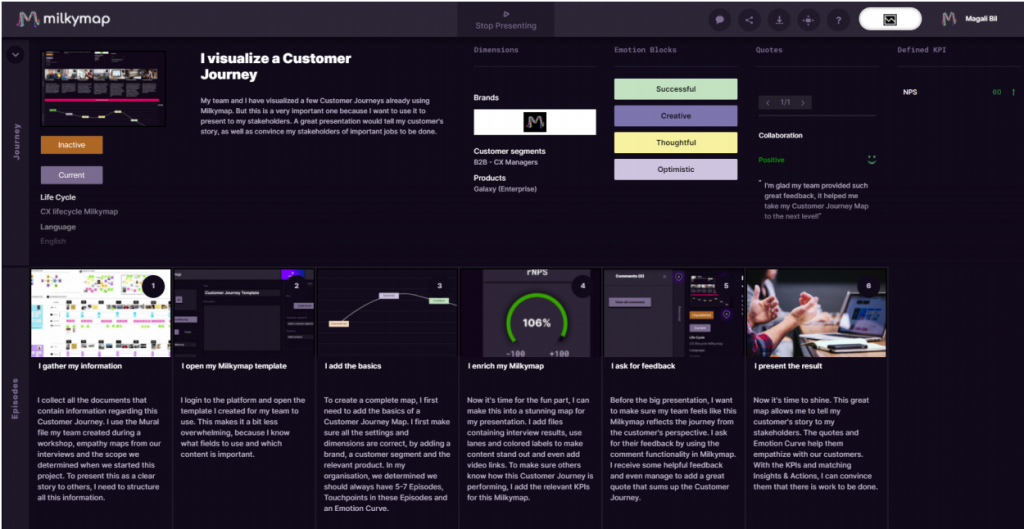From your perspective, it probably looks like your organisation is doing its utmost to put Customer Experience first. Then how come only 6% of customers indicate feeling heard and seen when 80% of organisations claim to build their business around the customer? (Bain & Company) You might be fooled into thinking your organisation is customer-centric even though your customers don’t experience it that way. So how exactly do you improve Customer Experience in a customer-centric way?

The Gap between organisations’ assumptions and a customer’s perspective
Clearly, a gap exists between an organisation’s perspective on customer focus and how customers perceive these organisations. But where does this gap come from?
Sales-focused organisations are often dedicated to meeting sales digits and increasing market share. There’s nothing wrong with aiming to meet these objectives, except that very often, Customer Experience is being sacrificed to achieve targets.
While thinking about customer happiness, a company gets so absorbed in measuring retention, patterns of use, conversion rate, ROI and segments, that buyers become numbers instead of individuals. These sales-focused metrics can get in the way of putting yourself in the shoes of your customer.
The Complexity of Customer Experience
In addition to the focus on sales metrics distracting organisations from empathizing with their customers, their perspective is becoming more difficult to understand. Customer Journeys are becoming increasingly complex and Customer Experience is, therefore, more complex too. Consumers may hop on their mobile phones to research a product, and then visit the store later that week, using their laptop to place an order online, and reaching out to customer service afterwards through chat.
A customer moves across multiple devices through time and selects each touchpoint with a different need. Each of these interactions is an opportunity to prove to the customer why they should choose you instead of the competition.
This is where Customer Journey Mapping comes in as the key to researching your Customer Experience efforts. Place yourself in your customer’s shoes by actively listening to them, through interviews, a panel discussion, or by mystery shopping your organisation. Then visualize these insights by creating one, or multiple, Customer Journey Map(s).
Customer Journey Mapping- Telling the story of your customer’s experiences
A Customer Journey Map contains multiple levels of information and can be very detailed depending on your scope and your customer’s experiences.
– There is overall Customer Journey level information at the highest level.
– Episodes, like book chapters, make up your customer’s story at the middle level.
– Lastly, there are the Touchpoints that make up each of the Episodes at the lowest level.
To work on improving the Customer Journey, you should aim to tell as much of your customer’s story as possible. Touchpoints can occur through multiple channels and we would recommend adding a separate Touchpoint for each of these channels. Measuring a channel in isolation will only tell a fraction of the story of what your client experiences, making it harder to identify improvement opportunities.

Improving your Customer Journeys
A Customer Journey Map is a visual representation of a customer’s experience in relation to your organisation. It should include all moments your customers have come into contact with your organisation, both on- and offline through the included Touchpoints.
It might seem sensible to take this representation and identify the moments of truth which will then lead to your improvement ideas. This approach might seem helpful, but it could get you caught up in individual and incremental improvements. So how do you effectively tackle improving your organisation’s Customer Journeys? By being a bit more ambitious than improving individual Touchpoints and applying reverse thinking.
Reverse Thinking
Instead of improving loose touchpoints to work towards the desired Customer Experience, reverse thinking redesigns the entire journey based on the customer’s perspective. The process aims to create an ideal version of the Customer Journey, based on insights gained from customers.
This may mean eliminating Touchpoints or completely rearranging a certain process to match your customer’s needs. This gives you the chance to nail 100% of the Customer Experience, instead of improving 5% at a time through individual Touchpoints.
Many people struggle to understand their customer’s goals and the way a customer wants to experience their product or service. This often means that when they attempt to improve a Customer Journey, they get stuck discussing internal processes and KPIs, as well as thinking changes would be too expensive to implement.
By analyzing customer journeys in reverse, companies can pinpoint the operational improvements that will have the greatest effect on customer experience. Reverse thinking and creating an ideal Customer Journey will keep the focus on the customer instead of internal processes and will make it easier to discuss if improvement ideas are worth the investment.
In Milkymap, you can create a future state Customer Journey Map to visualize the ideal version of a particular Customer Journey. With this ideal journey, you can identify improvement opportunties and simultaneously see how they will influence each other. Book a demo here or get in touch to find out more.
